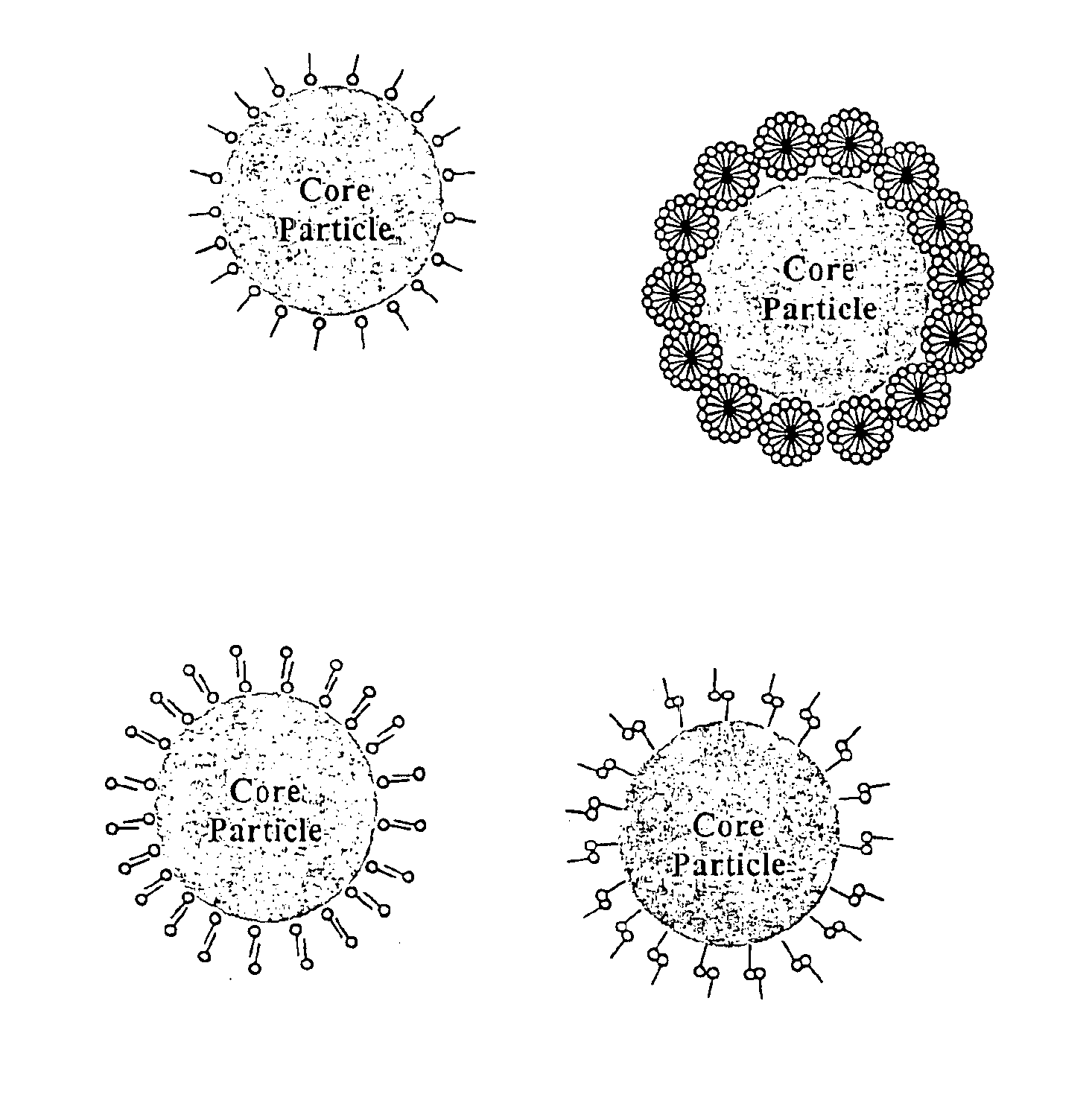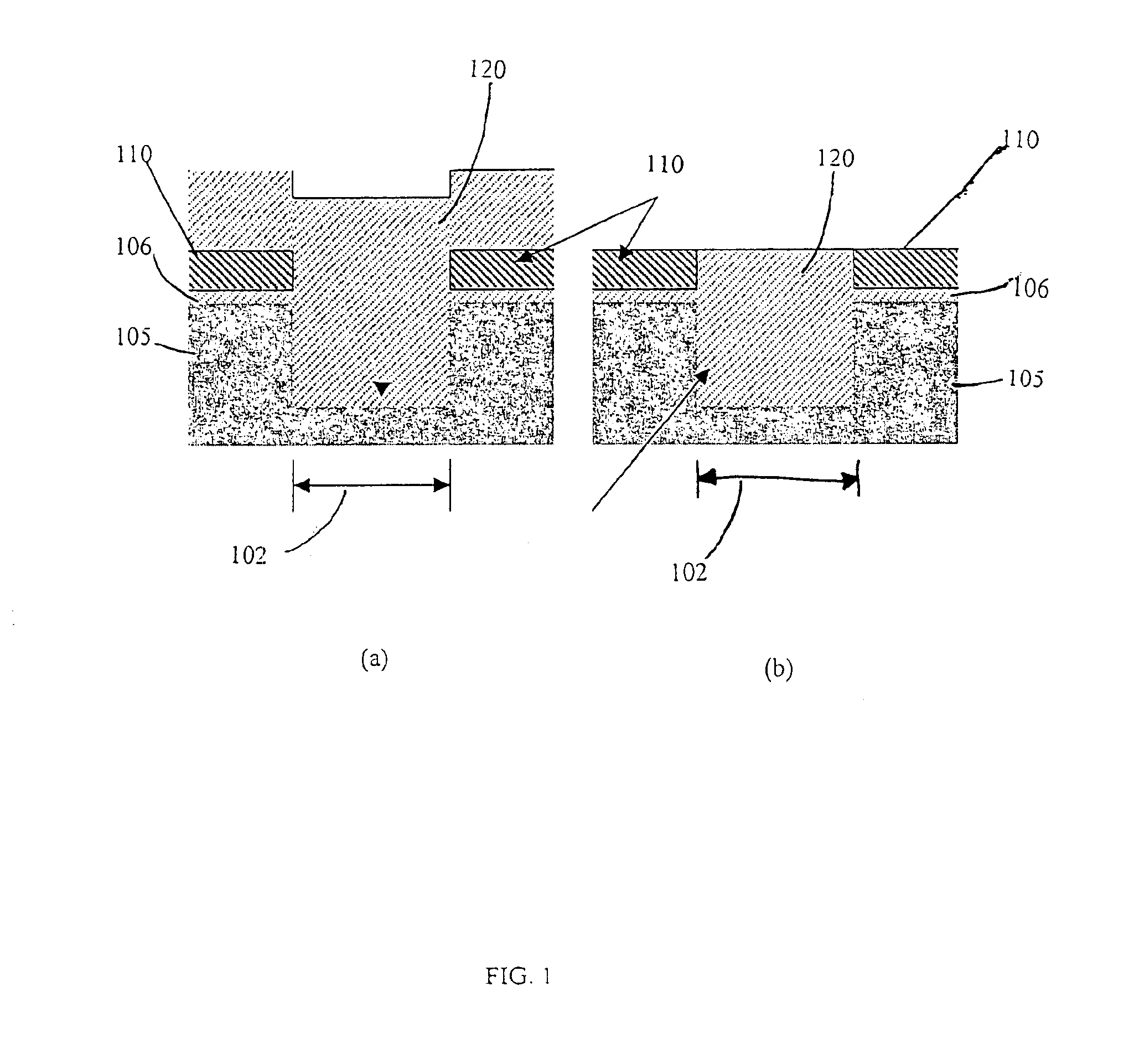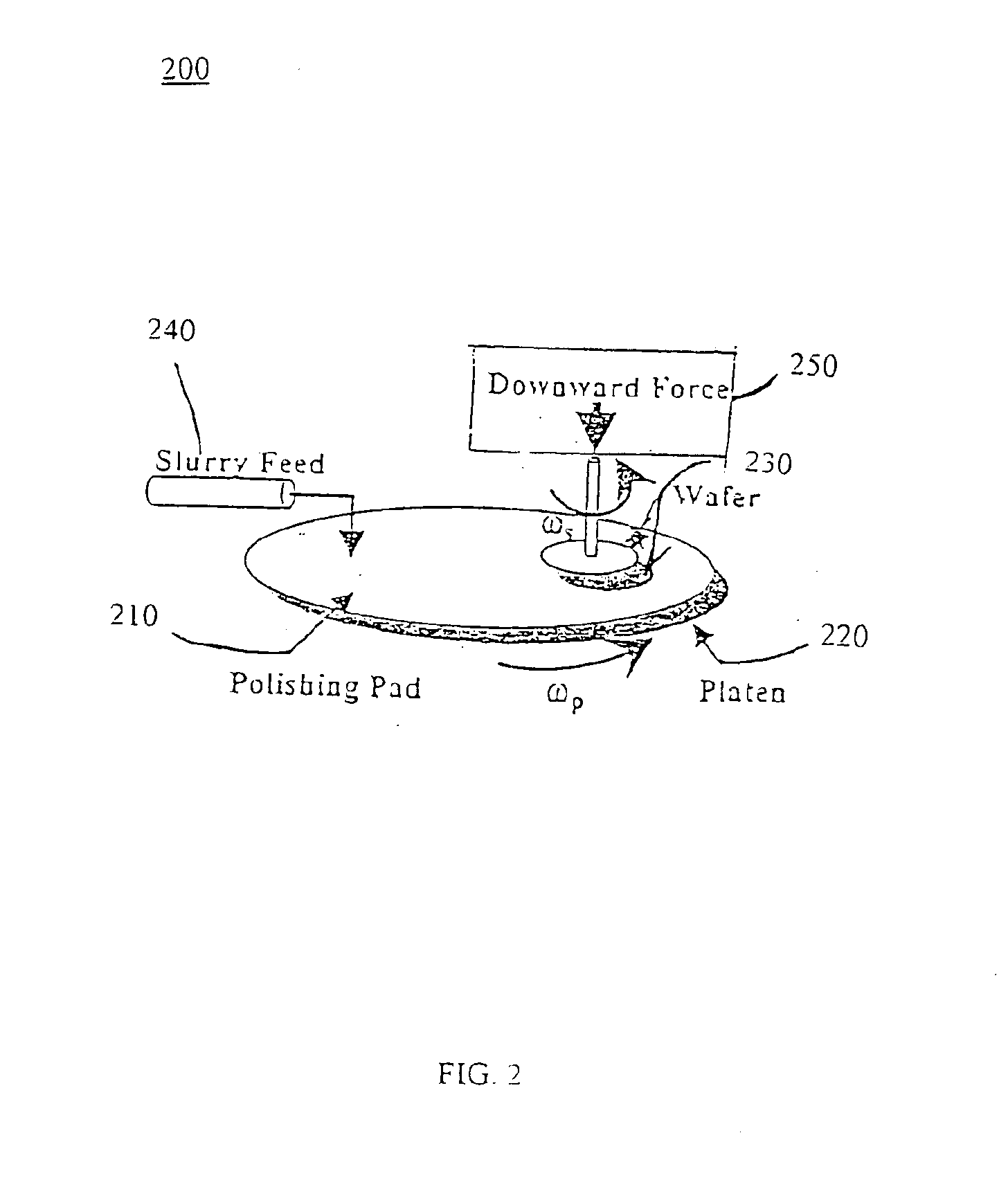High selectivity and high planarity dielectric polishing
a dielectric and high selectivity technology, applied in the direction of other chemical processes, polycrystalline material growth, crystal growth process, etc., can solve the problems of large device area stress, reduced device efficiency, and reduced device efficiency, so as to achieve high selectivity and high planarity the effect of high efficiency and rapid removal of materials
- Summary
- Abstract
- Description
- Claims
- Application Information
AI Technical Summary
Benefits of technology
Problems solved by technology
Method used
Image
Examples
example i
Substantial Adsorption Effect for Silicon Nitride
FIG. 15 is a table showing the removal rate of silicon nitride and its adsorption ratio (AR) when a single surfactant and a silicon nitride particle based slurry was used. The CMP experiments were conducted with silicon nitride based slurries at a pH of 3.0, a polishing pressure of 6.7 Psi, and a linear velocity of 253 ft / min. A bench-top Rotopol 30 polisher manufactured by Struer Company was used in this experiment. The concentration of the silicon nitride particles in the slurry was fixed at 2 wt percent. The particle size was varied from 80 nm to 2000 nm. FIG. 15 shows that the substantial adsorption effect can take place when cationic (CTAB), anionic (SDS), or zwitterionic (KETJENLUBE 522® / Dapral GE 202) surfactants are added to slurry.
The removal rate of the silicon nitride is substantially decreased by the addition of the surfactant, thus leading to a high adsorption ratio (AR). A high AR also leads to enhanced selectivity of si...
example ii
Substantial and Non-Substantial Adsorption, and Pressure Dependent Adsorption on Silicon Dioxide
Besides substantial adsorption onto silicon nitride, one preferred embodiment of the invention relates to creating substantial and non-substantial adsorption on silicon dioxide surfaces by addition of specific additives such as surfactants, soluble polymers and salts. Additionally, pressure dependent adsorption effects have also been demonstrated.
FIG. 19 shows the adsorption ratio on silicon dioxide and carbon doped silica based low K materials using a slurry including CTAB based surfactant additives and various particles. The pH of the slurry was adjusted to 7.0 and the concentration of the particles was varied from 2 to 5 wt. %. The polishing pressure was 6.7 Psi while the linear velocity was 253 ft / sec. Single phase inorganic cores (silicon nitride, silica, and nanoporous silica) and coated inorganic cores (silica coated with ceria, titania, manganese oxide, and alumina coated with sil...
example iii
Selective Adsorption Ratio and Selectivity
By controlling the adsorption ratio for both silicon nitride and silicon dioxide or low K dielectric surfaces, the selective adsorption ratio and the selectivity for polishing silicon dioxide or low K dielectrics with respect to silicon nitride can be controlled. FIG. 23 shows SAR and selectivity values for silicon nitride / silicon dioxide polishing using single and mixed selective adsorption additives. The pH of the slurry in these experiments was kept at 3, while the polishing pressure and the linear velocity were maintained at 6.7 Psi and 250 ft / min, respectively. The particle loading was maintained at 2 weight percent. The concentration of each of the surfactants, polymer additives and salts were varied from 0.1 mM to 128 mM, while the total concentration of surfactant species was 130 mM. The result shows that high SAR values can be obtained using single or a mixture of surfactants / polymer additives and salts.
The SAR values are also gener...
PUM
 Login to View More
Login to View More Abstract
Description
Claims
Application Information
 Login to View More
Login to View More - R&D
- Intellectual Property
- Life Sciences
- Materials
- Tech Scout
- Unparalleled Data Quality
- Higher Quality Content
- 60% Fewer Hallucinations
Browse by: Latest US Patents, China's latest patents, Technical Efficacy Thesaurus, Application Domain, Technology Topic, Popular Technical Reports.
© 2025 PatSnap. All rights reserved.Legal|Privacy policy|Modern Slavery Act Transparency Statement|Sitemap|About US| Contact US: help@patsnap.com



